John Landrigan KA4RXP/MM, departed the port city of Bluff, New Zealand on February 9, 2018 aboard the Soviet registered expeditionary vessel Professor Khromov also known as the M/V Spirit of Enderby. During the set up prior to sailing I met  Viktor, the ship’s Communications Officer and Ivan, the ship’s electrician. Their assistance was crucial to what success I was to enjoy.
Viktor, the ship’s Communications Officer and Ivan, the ship’s electrician. Their assistance was crucial to what success I was to enjoy.
The night of departure contact was made with JI1TIF in Tokyo and then VK4XXL in New South Wales. The power was at 100 watts from the Yaesu 897. Later that evening a 12 volt 25 amp power supply for the backup Icom transceiver was pressed into service to consolidate the auto-tuner power supply, the SCS Pactor modem supply and the Rigblaster Blue supply into one source. The power supply had been tested in Memphis but I forgot to switch it to 240 volt input. It promptly made a loud cracking noise. Shortly after that an attempt to email everyone resulted in another catastrophe. The SPE amplifier was switched in on low output and during a prolonged session of connecting with fairly constant repeating, a failure occurred in the auto tuner. The transmitter then interfered with a guard channel on a radio on the bridge radio and everything had to be shut down.
Inspection of the auto tuner revealed one severely burned relay and probably another burned relay next it. Multiple power supply combinations had been required at the dock to get the tuner operational and there may have been a surge voltage during that particular Winlink transmission that may have led to such a violent RF arcing and distortion of one of the relay housings.
 The next day, Viktor and Ivan assisted me in pulling the tuner and inspecting it. The concern of the Captain was such that we had to provide him with complete assurance that he would not be aware that I was operating the radio. The decision was made to forgo the amplifier and instead try to use it’s built in tuner to produce a matched input to the Pacific Aerials 7.3 meter vertical. A match could not be achieved. I used the ship’s commercial internet service to notify the group of my predicament and then relegated myself to being a tourist only.
The next day, Viktor and Ivan assisted me in pulling the tuner and inspecting it. The concern of the Captain was such that we had to provide him with complete assurance that he would not be aware that I was operating the radio. The decision was made to forgo the amplifier and instead try to use it’s built in tuner to produce a matched input to the Pacific Aerials 7.3 meter vertical. A match could not be achieved. I used the ship’s commercial internet service to notify the group of my predicament and then relegated myself to being a tourist only.
The next day Ivan brought back the power supply that he had repaired. I don’t how or what he did but Richard, this guy needs to be hired by you. Viktor helped trace through possible surviving tuner circuits and felt I could use 7 MHz and 10 MHz. Transmitting at only a 100 watts, caused no further interference.
We did a Zodiac boat tour around Snares Island, made a landing at Enderby Island in the Aucklands Group and made two landings at Macquarie Island. All the Australian philatelic items were postmarked there and are being held for mailing from there in late March.
Rough seas caused us to skip a landing at Cape Adare. We then proceeded to McMurdo Sound and found a previously cut channel by the ice breaker Polar Star had completely re-frozen and blocked us some 12 miles out from McMurdo. Re-tracking, we went to Cape Evans and landed at Scott’s Hut. I brought all the New Zealand Dependency philatelic items with me and will sign and date them for that landing. I will have them postmarked at the Ross Island Dependencies window at the Main Post Office in Christchurch once we return. The Italian Base had previously closed due to heavy ice.
I reinstalled the tuner and it seems to manage without incident on 40 and 30 meters. Reception is very spotty and I have not been able to make any contacts. On February 23 and 24 I heard K7GI in Tuscon and K6MYX in San Diego booming in at S9++. Craig was fighting S9 noise levels on his end and none of the Australian or New Zealand Stations were hearing me from my grid square RB32. Also heard K7UI.
Hope continues ever onward that perhaps this will make it via Winlink prior to us reaching Christchurch.
TNX John Landrigan KA4RXP/MM
We should traverse the remaining 500 nautical miles to reach Campbell Island during the day of March 3, Seas are very rough and biggest roll so far is 27 degrees. 55 degrees is when you really start to pray.
I am looking forward to the International DX Contest on Saturday and Sunday.
John KA4RXP/MM Grid Square RD01xu
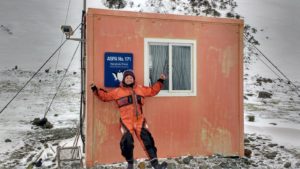 Barton Refuge is a Hut of 3 by 3 mts with gas stove, food, water, dry clothing and dry boots. Located little East of Narebsky point at 62° 14’ 18” South, 58° 45’ 20” West, this Korean outfits is used as emergency shelter and for scientific purpose. Korea’s King Sejong Station (WAP KOR-Ø1) lies 2 km to the North-East.
Barton Refuge is a Hut of 3 by 3 mts with gas stove, food, water, dry clothing and dry boots. Located little East of Narebsky point at 62° 14’ 18” South, 58° 45’ 20” West, this Korean outfits is used as emergency shelter and for scientific purpose. Korea’s King Sejong Station (WAP KOR-Ø1) lies 2 km to the North-East.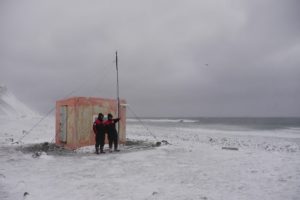 level.
level.
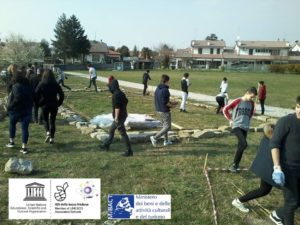 Students of the “Malignani Institute” reconstruct the basement perimeter of the Italian scientific outpost built in Antarctica in 1976 by the Cepparo’s Expedition. It’s called MAVI (Memoriale dell’Antartide “Valle Italia”, Cepparo-Bove) and it’s a Memorial to not forget . The Ministry of Cultural Heritage (MiBACT) is one of the sponsors of this “National Antarctic Memorial, Renato Cepparo”
Students of the “Malignani Institute” reconstruct the basement perimeter of the Italian scientific outpost built in Antarctica in 1976 by the Cepparo’s Expedition. It’s called MAVI (Memoriale dell’Antartide “Valle Italia”, Cepparo-Bove) and it’s a Memorial to not forget . The Ministry of Cultural Heritage (MiBACT) is one of the sponsors of this “National Antarctic Memorial, Renato Cepparo”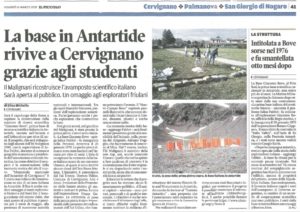 President of Adri-Antartica, Prof. Julius Fabbri, Ph.D. with the Cultural Association “ Adri-Antartica” in collaboration with the Municipality of Cervignano del Friuli (UD) and the School “Malignani 2000” member of the UNESCO network are pleased to announce the inauguration ceremony of the Antarctica “Valle Italia” (MANI), Cepparo-Bove, on Friday 25 May 2018 at the headquarters of the “A.Malignani” Technical Institute in Ramazzotti street , 41 – Cervignano del Friuli (Udine). The event falls into the National Competition of the MIUR “Future Present”, in agreement with UNESCO Youth – second edition –school year 2017/18
President of Adri-Antartica, Prof. Julius Fabbri, Ph.D. with the Cultural Association “ Adri-Antartica” in collaboration with the Municipality of Cervignano del Friuli (UD) and the School “Malignani 2000” member of the UNESCO network are pleased to announce the inauguration ceremony of the Antarctica “Valle Italia” (MANI), Cepparo-Bove, on Friday 25 May 2018 at the headquarters of the “A.Malignani” Technical Institute in Ramazzotti street , 41 – Cervignano del Friuli (Udine). The event falls into the National Competition of the MIUR “Future Present”, in agreement with UNESCO Youth – second edition –school year 2017/18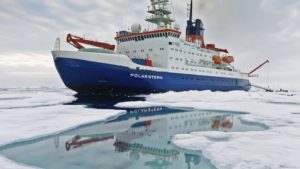 DJØHO/MM has been confirmed as being located on the German icebreaker and Research Vessel R/V Polarstern!
DJØHO/MM has been confirmed as being located on the German icebreaker and Research Vessel R/V Polarstern!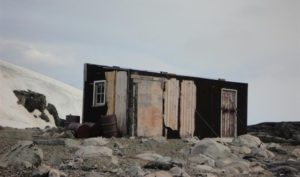 The Hut (67° 32′ South, 67° 12′ West) was built in 1957 and used as a satellite and advance base for survey and geological parties for personnel based at Horseshoe Island Station “Y” (WAP GBR-14). It was also used by parties from Detaille Island Station “W” (WAP GBR-26) and Stonington Island Station “E” (WAP GBR-Ø5). The sea ice around the island had proved unreliable during the previous two seasons, limiting the amount of sled travel and survey work that could be carried out from base.
The Hut (67° 32′ South, 67° 12′ West) was built in 1957 and used as a satellite and advance base for survey and geological parties for personnel based at Horseshoe Island Station “Y” (WAP GBR-14). It was also used by parties from Detaille Island Station “W” (WAP GBR-26) and Stonington Island Station “E” (WAP GBR-Ø5). The sea ice around the island had proved unreliable during the previous two seasons, limiting the amount of sled travel and survey work that could be carried out from base.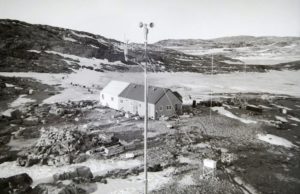 designated as Historic Site No. 63 under the Antarctic Treaty, 19 May 1995 (included with Horseshoe Island Station). The site has been cleaned up and minor repairs completed in Mar 1997.
designated as Historic Site No. 63 under the Antarctic Treaty, 19 May 1995 (included with Horseshoe Island Station). The site has been cleaned up and minor repairs completed in Mar 1997.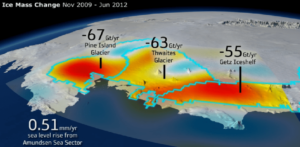 International Thwaites Glacier Collaboration will incorporate other nations’ research to time a potential collapse and assess implications for sea level rise, coastal infrastructure.
International Thwaites Glacier Collaboration will incorporate other nations’ research to time a potential collapse and assess implications for sea level rise, coastal infrastructure.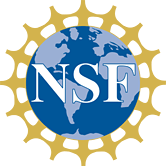 day that teams of scientists at U.S. institutions will deploy to Antarctica to gather the data needed to understand whether the glacier could begin to collapse in the next few decades or centuries from now.
day that teams of scientists at U.S. institutions will deploy to Antarctica to gather the data needed to understand whether the glacier could begin to collapse in the next few decades or centuries from now. search collaboration, called the International Thwaites Glacier Collaboration (ITGC), was announced at the British Antarctic Survey (BAS) headquarters in Cambridge, England. The collaboration’s scientists will begin their first research season in Antarctica in October 2018, establishing a logistical support structure for future work. The collaboration will continue until 2021.
search collaboration, called the International Thwaites Glacier Collaboration (ITGC), was announced at the British Antarctic Survey (BAS) headquarters in Cambridge, England. The collaboration’s scientists will begin their first research season in Antarctica in October 2018, establishing a logistical support structure for future work. The collaboration will continue until 2021.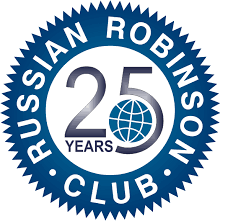 Yuri Sushkin N3QQ (aka UA9OPA) informs that next September 20-23rd 2018, several Radioamateurs will join the “RRC Anniversary meeting” in Orel, Russia, 200 miles from Moscow. A wonderful opportunity to have lot’s of fun and meet all RRC hard core guys!
Yuri Sushkin N3QQ (aka UA9OPA) informs that next September 20-23rd 2018, several Radioamateurs will join the “RRC Anniversary meeting” in Orel, Russia, 200 miles from Moscow. A wonderful opportunity to have lot’s of fun and meet all RRC hard core guys!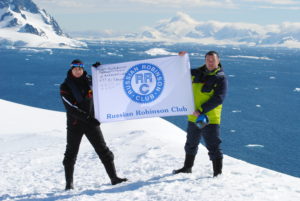
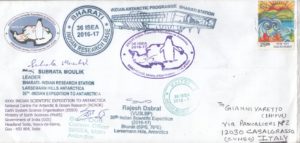 Thanks to Bhagwati VU3BPZ and Rajesh VU3LBP, few envelopes are now coming at the end of the XXXVI Indian Scientific Expedition to Antarctica.
Thanks to Bhagwati VU3BPZ and Rajesh VU3LBP, few envelopes are now coming at the end of the XXXVI Indian Scientific Expedition to Antarctica.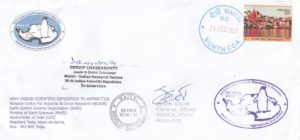 collecting Antarctic stamps, Covers , Antarctic ship covers, Polarogrammes, or any other envelopes or post cards coming from Antarctica is undoubtedly a great satisfaction … same as receiving QSLs after an Ham Radio contact with an Antarctic Base!
collecting Antarctic stamps, Covers , Antarctic ship covers, Polarogrammes, or any other envelopes or post cards coming from Antarctica is undoubtedly a great satisfaction … same as receiving QSLs after an Ham Radio contact with an Antarctic Base! Norbet Trupp VK5MQ, is currently operating from Macquarie Island as VKØAI. He uses an Icom IC-7300 with vertical and has been already reported active on 20, 30, 40 & 80 mts bands in FT8 Mode.
Norbet Trupp VK5MQ, is currently operating from Macquarie Island as VKØAI. He uses an Icom IC-7300 with vertical and has been already reported active on 20, 30, 40 & 80 mts bands in FT8 Mode.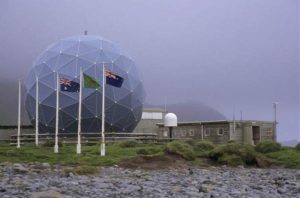
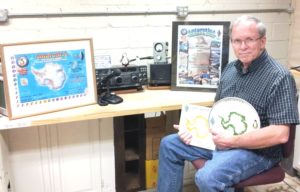 resent worldwide.
resent worldwide.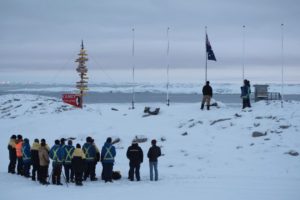 Casey Research Station (WAP AUS-Ø2):
Casey Research Station (WAP AUS-Ø2):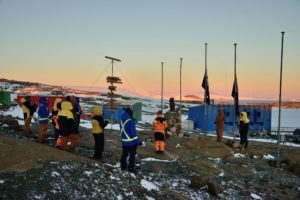
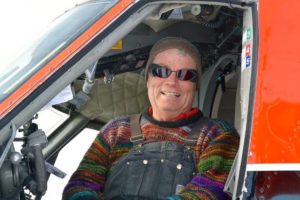 Starting his career as a Certified Swiss Mountain Guide, Henry Perk acquired his commercial pilots license and Ham license while guiding in the Canadian Rockies.
Starting his career as a Certified Swiss Mountain Guide, Henry Perk acquired his commercial pilots license and Ham license while guiding in the Canadian Rockies.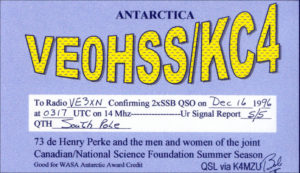 While in Antarctic each summer in the 1990’s Henry operated from many large and small locations as Siple Dome Station (WAP USA-18), Vostok Station (WAP RUS-13), WASA (WAP SVE-Ø4), ABOA (WAP FIN-Ø1), South Pole Station (WAP USA-21), McMurdo (WAP USA-22), Dome Charlie (WAP USA-Ø5), and many others.
While in Antarctic each summer in the 1990’s Henry operated from many large and small locations as Siple Dome Station (WAP USA-18), Vostok Station (WAP RUS-13), WASA (WAP SVE-Ø4), ABOA (WAP FIN-Ø1), South Pole Station (WAP USA-21), McMurdo (WAP USA-22), Dome Charlie (WAP USA-Ø5), and many others.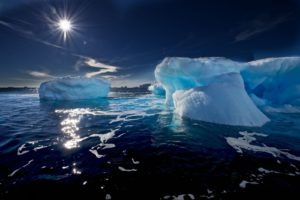 The iceberg graveyard in Petermann Bay in Antarctica provides plenty of opportunity for whales, seals, penguins and other seabirds to feed along. Wind and current have created an iceberg graveyard here. The ice groans and sighs. The icebergs crackle and sparkle, buck and roll in the brilliant sunlight, reflecting every shade of blue.
The iceberg graveyard in Petermann Bay in Antarctica provides plenty of opportunity for whales, seals, penguins and other seabirds to feed along. Wind and current have created an iceberg graveyard here. The ice groans and sighs. The icebergs crackle and sparkle, buck and roll in the brilliant sunlight, reflecting every shade of blue. On one of the thirteen Argentine Research Stations in Antarctica, Esperanza Base (WAP ARG-Ø4), we find the Chapel of San Francisco de Asís. The Esperanza base is inhabited all year round by civilians and is considered by the Argentines, as the southernmost city of the country, although it is only a small village. Besides the church, the base also has a school, a museum, a bar, a casino and a hospital with permanent maternity service and where enough Argentines have come to the world.
On one of the thirteen Argentine Research Stations in Antarctica, Esperanza Base (WAP ARG-Ø4), we find the Chapel of San Francisco de Asís. The Esperanza base is inhabited all year round by civilians and is considered by the Argentines, as the southernmost city of the country, although it is only a small village. Besides the church, the base also has a school, a museum, a bar, a casino and a hospital with permanent maternity service and where enough Argentines have come to the world.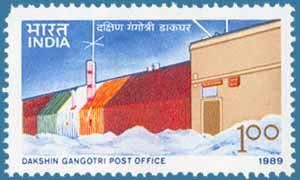 The Post Office was part of the Research Base known as Dakshin Gangotri (WAP IND-Ø1). It was set up during the third Indian expedition to the Antarctic but after six years of rigorous service, the place was decommissioned. The whole place got buried under the heavy blanket snow and is now marked as a historical site. The Post Office became operational on February 24, 1984 and was part of multiple support systems at Dakshin Gangotri. The other facilities included an ice-melting plant, accommodation, recreation facilities, laboratories, storage, a clinic and a bank counter. The Dakshin Gangotri Post Office was established under the Department of Post Office at Goa on January 26, 1988. Scientist G. Sudhakar Rao was appointed as the first Honorary Postmaster. He had gone to the Antarctic as a member of the Seventh Indian Scientific Expedition in 1987. In the very first year of its foundation, almost 10,000 letters were posted and cancelled in the Dakshin Gangotri post office..
The Post Office was part of the Research Base known as Dakshin Gangotri (WAP IND-Ø1). It was set up during the third Indian expedition to the Antarctic but after six years of rigorous service, the place was decommissioned. The whole place got buried under the heavy blanket snow and is now marked as a historical site. The Post Office became operational on February 24, 1984 and was part of multiple support systems at Dakshin Gangotri. The other facilities included an ice-melting plant, accommodation, recreation facilities, laboratories, storage, a clinic and a bank counter. The Dakshin Gangotri Post Office was established under the Department of Post Office at Goa on January 26, 1988. Scientist G. Sudhakar Rao was appointed as the first Honorary Postmaster. He had gone to the Antarctic as a member of the Seventh Indian Scientific Expedition in 1987. In the very first year of its foundation, almost 10,000 letters were posted and cancelled in the Dakshin Gangotri post office..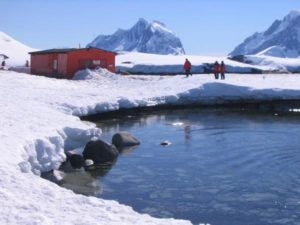 Opened on February 6, 1955, Grussac Naval refuge (65° 10’ 33” South, 64° 08’ 10” West), on Petermann Island, was originally named to Hipólito Bouchard. , It takes its current name in homage to Paul Groussac (1848-1929), a French writer and historian based in Argentina and author of an allegation about the Argentine sovereignty of the Falkland Islands. Close to this Argentine naval refuge ( an old corrugated iron shack in rusted colors), lays a simple cross monument, an unreadable metal plaque with just one word “John” recalls the dead of a man of the British Antarctic Survey, who tried to get here over the sea ice in 1982..
Opened on February 6, 1955, Grussac Naval refuge (65° 10’ 33” South, 64° 08’ 10” West), on Petermann Island, was originally named to Hipólito Bouchard. , It takes its current name in homage to Paul Groussac (1848-1929), a French writer and historian based in Argentina and author of an allegation about the Argentine sovereignty of the Falkland Islands. Close to this Argentine naval refuge ( an old corrugated iron shack in rusted colors), lays a simple cross monument, an unreadable metal plaque with just one word “John” recalls the dead of a man of the British Antarctic Survey, who tried to get here over the sea ice in 1982..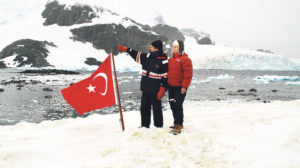 Faruk Ozlu said on Wednesday.
Faruk Ozlu said on Wednesday.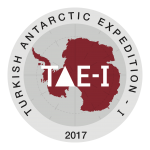
 A scientific expedition will next year try to find the Endurance, the ill-fated ship of Antarctic explorer Sir Ernest Shackleton. The vessel sank in 1915, crushed by sea-ice in the Weddell Sea and lost in 3,000m of water.
A scientific expedition will next year try to find the Endurance, the ill-fated ship of Antarctic explorer Sir Ernest Shackleton. The vessel sank in 1915, crushed by sea-ice in the Weddell Sea and lost in 3,000m of water. Scientists in Antarctica have harvested their first crop of vegetables grown without earth, daylight or pesticides as part of a project designed to help astronauts cultivate fresh food on other planets.
Scientists in Antarctica have harvested their first crop of vegetables grown without earth, daylight or pesticides as part of a project designed to help astronauts cultivate fresh food on other planets. Indian Antarctic Program did start in 1981 with the first Indian expedition to Antarctica, a huge geo-political achievement. Dr. S Z Qasim, Secretary of Department of Environment and former Director of NIO was selected as the leader of the 21 member Team.
Indian Antarctic Program did start in 1981 with the first Indian expedition to Antarctica, a huge geo-political achievement. Dr. S Z Qasim, Secretary of Department of Environment and former Director of NIO was selected as the leader of the 21 member Team.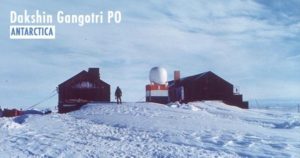 carry out scientific work Dakshin Gangotri was built in eight weeks by an 81 member Team. With help from the Indian army they did complete the construction in January 1984.
carry out scientific work Dakshin Gangotri was built in eight weeks by an 81 member Team. With help from the Indian army they did complete the construction in January 1984.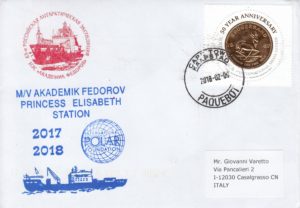 Great job is done by several worldwide Polar Philatelist Societies, just available on the web to learn and share the common interest in stamps, covers, and postal history. An interesting site with lots of links and information can be found here:
Great job is done by several worldwide Polar Philatelist Societies, just available on the web to learn and share the common interest in stamps, covers, and postal history. An interesting site with lots of links and information can be found here:  Happy Easter from WAP Staff
Happy Easter from WAP Staff
 With deep sorrow we (at WAP) knew at this moment that a young researcher engaged in the Antarctic campaign at the Indian Maitri Base, was victim of an accident in the Ice shelf.
With deep sorrow we (at WAP) knew at this moment that a young researcher engaged in the Antarctic campaign at the Indian Maitri Base, was victim of an accident in the Ice shelf.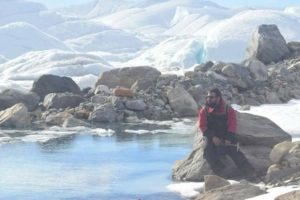 Born on 13th April 1994, Shri. Subhajit Sen did pass away on Tuesday the 27th March 2018 while at Indian convoy route to Maitri Station , Antarctica in service to the Nation.
Born on 13th April 1994, Shri. Subhajit Sen did pass away on Tuesday the 27th March 2018 while at Indian convoy route to Maitri Station , Antarctica in service to the Nation.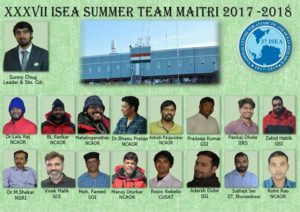 expected to return back home by April 2018. Through a competitive process, he was selected for the expedition based on his research project “Deformation – Fabric in Sub-glacial Till Exposed in Schirmacher Oasis”.
expected to return back home by April 2018. Through a competitive process, he was selected for the expedition based on his research project “Deformation – Fabric in Sub-glacial Till Exposed in Schirmacher Oasis”. With profound grief and sorrow we at the Indian Research Base, Maitri Antarctica and at National Centre for Antarctic and Ocean Research, Goa condole the death of Shri Subhajit Sen and pray to God almighty for his soul rests in peace and for strength courage and solace to the family.
With profound grief and sorrow we at the Indian Research Base, Maitri Antarctica and at National Centre for Antarctic and Ocean Research, Goa condole the death of Shri Subhajit Sen and pray to God almighty for his soul rests in peace and for strength courage and solace to the family. Officially opened on 20 March 1968; the US Palmer Research Station (WAP USA-23) on Anvers Island focuses primarily on Antarctic marine biology and zoology.
Officially opened on 20 March 1968; the US Palmer Research Station (WAP USA-23) on Anvers Island focuses primarily on Antarctic marine biology and zoology.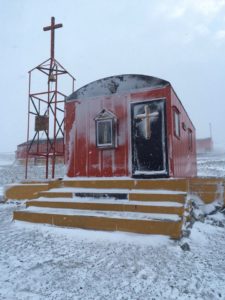 Christianity was first established in Antarctica by Captain Aeneas Mackintosh who erected a cross on Wind Vane Hill in 1916. The first religious service was conducted in Antarctica in 1947 by William Menster with about 2,000 people from different Christian denominations in attendance. Research and whaling stations were erected in the large area of Antarctica in the early 1900s. Since then, several scientists are attending the area especially during summer while a few people stay over during winter. The extended stay in the region can be stressful and challenging for researchers. The Jesuit geophysicists have contributed to the growth of religion in the continent through Antarctica mission work. The religion in Antarctica dates back to the discovery of the continent in 18th century. However, Christianity was the first religious practice in the continent.
Christianity was first established in Antarctica by Captain Aeneas Mackintosh who erected a cross on Wind Vane Hill in 1916. The first religious service was conducted in Antarctica in 1947 by William Menster with about 2,000 people from different Christian denominations in attendance. Research and whaling stations were erected in the large area of Antarctica in the early 1900s. Since then, several scientists are attending the area especially during summer while a few people stay over during winter. The extended stay in the region can be stressful and challenging for researchers. The Jesuit geophysicists have contributed to the growth of religion in the continent through Antarctica mission work. The religion in Antarctica dates back to the discovery of the continent in 18th century. However, Christianity was the first religious practice in the continent.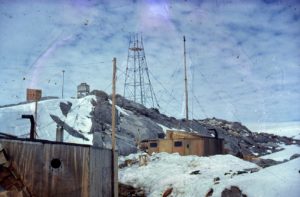
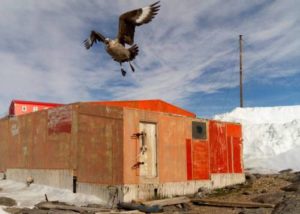
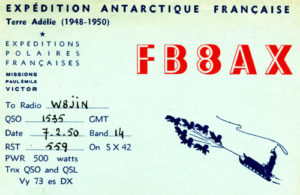 entirely available online. It is an excellent testimony of the daily life conditions in Antarctica in 1950s in which clearly appear FB8AX (René Gros from 7mns10s to 8mns 00s then Mario Marret from 9mns53 to 57s).
entirely available online. It is an excellent testimony of the daily life conditions in Antarctica in 1950s in which clearly appear FB8AX (René Gros from 7mns10s to 8mns 00s then Mario Marret from 9mns53 to 57s).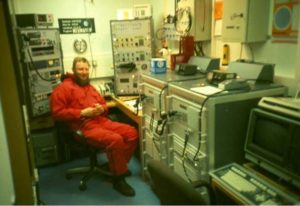 Volker Strecke DL8JDX is a great friend and an Antarctic veteran who did participate to several Antarctic Expeditions from 1988 through 1994.
Volker Strecke DL8JDX is a great friend and an Antarctic veteran who did participate to several Antarctic Expeditions from 1988 through 1994.
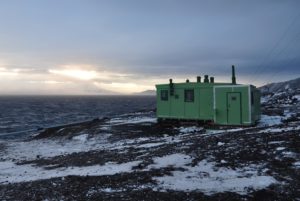 Nestled alongside Scott Base (WAP NZL-Ø1) in Antarctica, is Hillary’s Hut, a small building that’s played a big role in New Zealand’s history. Hillary’s Hut was the first building constructed at Scott Base. It was built by a team led by Sir Edmund Hillary in 1957 and it was from here that Sir Ed later led the historic expedition to the South Pole.
Nestled alongside Scott Base (WAP NZL-Ø1) in Antarctica, is Hillary’s Hut, a small building that’s played a big role in New Zealand’s history. Hillary’s Hut was the first building constructed at Scott Base. It was built by a team led by Sir Edmund Hillary in 1957 and it was from here that Sir Ed later led the historic expedition to the South Pole.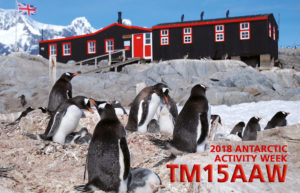 Thanks to F8DVD, always present since the 1st edition of the Antarctic Activity Week, 15 years ago!
Thanks to F8DVD, always present since the 1st edition of the Antarctic Activity Week, 15 years ago!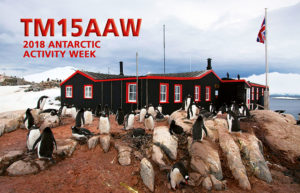 Port Lockroy is situated on Goudier Island in the Palmer Archipelago (64°49’S – 63° 30’W) about 700 miles south of Argentina and Chile. The bay was discovered during Jean-Baptiste Charcot’s French Antarctic expedition in 1904 and was named after Edouard Lockroy, a French politician and Vice President of the Chamber of Deputies, who assisted the explorer in obtaining government funding for his expedition.
Port Lockroy is situated on Goudier Island in the Palmer Archipelago (64°49’S – 63° 30’W) about 700 miles south of Argentina and Chile. The bay was discovered during Jean-Baptiste Charcot’s French Antarctic expedition in 1904 and was named after Edouard Lockroy, a French politician and Vice President of the Chamber of Deputies, who assisted the explorer in obtaining government funding for his expedition.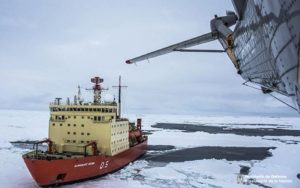 The Argentine Ministry of Defense reports, by the Antarctic joint commander, Marine Commodore Pablo Fal that the crew of the Icebreaker Almirante Irízar rescued five US scientists who were stranded in Antarctica.
The Argentine Ministry of Defense reports, by the Antarctic joint commander, Marine Commodore Pablo Fal that the crew of the Icebreaker Almirante Irízar rescued five US scientists who were stranded in Antarctica.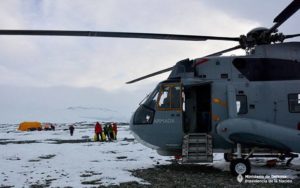 request of the Argentine Foreign Ministry and went to Joinville Island to rescue the scientists.
request of the Argentine Foreign Ministry and went to Joinville Island to rescue the scientists.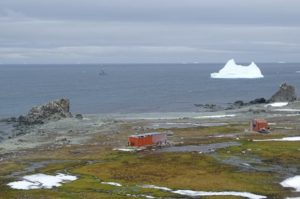 Francisco de Gurruchaga Antarctic Naval Refuge (62°14’03.0″ South, 59°10’02.0″ West), also known as Armonia Refuge or Harmony Haven has been recently referenced with WAP ARG-28 following the activity of Juan Manuel Pereda who did operate from there as LU4CJM/Z from Jan. 8th through 22nd 2017.
Francisco de Gurruchaga Antarctic Naval Refuge (62°14’03.0″ South, 59°10’02.0″ West), also known as Armonia Refuge or Harmony Haven has been recently referenced with WAP ARG-28 following the activity of Juan Manuel Pereda who did operate from there as LU4CJM/Z from Jan. 8th through 22nd 2017.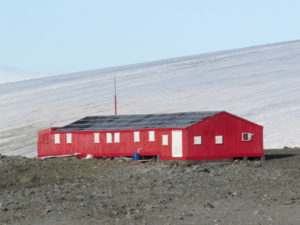 On the hill about 500m from Esperanza is Trinity House, a hut remaining from “Base D”, built by the UK in 1944–45 and closed in 1963. It was transferred to Uruguay in 1997 and is now named Ruperto Elichiribehety Station after the captain of Uruguayan steam trawler Instituto de Pesca No 1, which Shackleton used in his second of three unsuccessful attempts to reach the Elephant Island castaways. The summer-only facility accommodates eight.
On the hill about 500m from Esperanza is Trinity House, a hut remaining from “Base D”, built by the UK in 1944–45 and closed in 1963. It was transferred to Uruguay in 1997 and is now named Ruperto Elichiribehety Station after the captain of Uruguayan steam trawler Instituto de Pesca No 1, which Shackleton used in his second of three unsuccessful attempts to reach the Elephant Island castaways. The summer-only facility accommodates eight.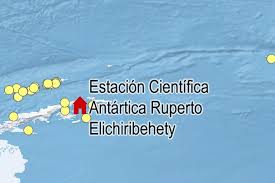
 The commander of a Spanish Navy Rsearch Ship has died in Antarctica after apparently falling overboard.
The commander of a Spanish Navy Rsearch Ship has died in Antarctica after apparently falling overboard.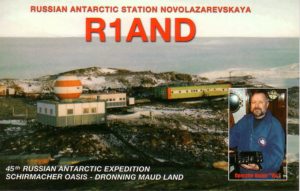 Oleg Sakharov UA1PBA/ZS1ANF/RI1ANF was helpful to understand a bit more, so thanks to him, now the story is more clear.
Oleg Sakharov UA1PBA/ZS1ANF/RI1ANF was helpful to understand a bit more, so thanks to him, now the story is more clear.
 Viktor, the ship’s Communications Officer and Ivan, the ship’s electrician. Their assistance was crucial to what success I was to enjoy.
Viktor, the ship’s Communications Officer and Ivan, the ship’s electrician. Their assistance was crucial to what success I was to enjoy. The next day, Viktor and Ivan assisted me in pulling the tuner and inspecting it. The concern of the Captain was such that we had to provide him with complete assurance that he would not be aware that I was operating the radio. The decision was made to forgo the amplifier and instead try to use it’s built in tuner to produce a matched input to the Pacific Aerials 7.3 meter vertical. A match could not be achieved. I used the ship’s commercial internet service to notify the group of my predicament and then relegated myself to being a tourist only.
The next day, Viktor and Ivan assisted me in pulling the tuner and inspecting it. The concern of the Captain was such that we had to provide him with complete assurance that he would not be aware that I was operating the radio. The decision was made to forgo the amplifier and instead try to use it’s built in tuner to produce a matched input to the Pacific Aerials 7.3 meter vertical. A match could not be achieved. I used the ship’s commercial internet service to notify the group of my predicament and then relegated myself to being a tourist only.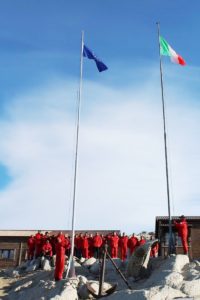 With more than fifty scientific projects done, with the lowering flag’s ceremony the activities of the XXXIII Summer 2017-2018 Campaign of the Italian National Program of Research in Antarctica (PNRA) at Mario Zucchelli Station (WAP ITA-Ø1) of Terra Nova Bay, are finished.
With more than fifty scientific projects done, with the lowering flag’s ceremony the activities of the XXXIII Summer 2017-2018 Campaign of the Italian National Program of Research in Antarctica (PNRA) at Mario Zucchelli Station (WAP ITA-Ø1) of Terra Nova Bay, are finished. research and logistics activities within the Antarctic Continent; 25 specialists of the 3 Armed Forces have been involved: mountain scouts, pilots, weather forecasters, mechanics, riders and divers gave a great contribution to the success of the Summer campaign.
research and logistics activities within the Antarctic Continent; 25 specialists of the 3 Armed Forces have been involved: mountain scouts, pilots, weather forecasters, mechanics, riders and divers gave a great contribution to the success of the Summer campaign.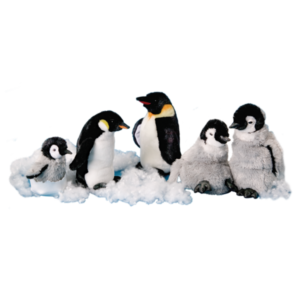 Tourist numbers on the Icy Continent have grown by twenty times in 30 years. Tourism in Antarctica has risen from fewer than 2,000 visitors in the 1980s to more than 45,000 visitors from around the world last year. The number of people travelling to the frozen continent dipped during the economic recession of the late 2000s, but rose again in recent years, according to data kept by the Rhode-Island based International Association of Antarctic Tour Operators.
Tourist numbers on the Icy Continent have grown by twenty times in 30 years. Tourism in Antarctica has risen from fewer than 2,000 visitors in the 1980s to more than 45,000 visitors from around the world last year. The number of people travelling to the frozen continent dipped during the economic recession of the late 2000s, but rose again in recent years, according to data kept by the Rhode-Island based International Association of Antarctic Tour Operators.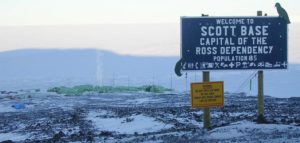 As the base was named after British explorer Robert Falcon Scott, the New Zealand flag was raised on a flagstaff that had been used by Scott at Hut Point in 1903. Originally established to support the privately run Commonwealth Trans-Antarctic Expedition of 1955-58, it was to accommodate both the New Zealand party and a party of New Zealand scientists attached to the expedition who also contributed to the International Geophysical Year. These parties were the first to spend winter over at Scott Base. At the Completion of the expedition, Scott Base became the property of the New Zealand Government in agreement with the Ross Sea Committee. Source:
As the base was named after British explorer Robert Falcon Scott, the New Zealand flag was raised on a flagstaff that had been used by Scott at Hut Point in 1903. Originally established to support the privately run Commonwealth Trans-Antarctic Expedition of 1955-58, it was to accommodate both the New Zealand party and a party of New Zealand scientists attached to the expedition who also contributed to the International Geophysical Year. These parties were the first to spend winter over at Scott Base. At the Completion of the expedition, Scott Base became the property of the New Zealand Government in agreement with the Ross Sea Committee. Source:  II3BOVE is one of the Special Callsign to be aired, along with several others, within the initiatives of the 15th Antarctic Week 2018 scheduled from 17 to 25 February. In particular II3BOVE (WAP-271) aims to remember the first Italian Scientific Base in Antarctica, set in January 1976 by Cav. Renato Cepparo (I2VZP) and named after Giacomo Bove, the Italian explorer who at the end of 1800 sailed to the South to arrange an expedition on the Antarctic Continent. The Base, was active until 20th February 1976 as I1SR/MM.
II3BOVE is one of the Special Callsign to be aired, along with several others, within the initiatives of the 15th Antarctic Week 2018 scheduled from 17 to 25 February. In particular II3BOVE (WAP-271) aims to remember the first Italian Scientific Base in Antarctica, set in January 1976 by Cav. Renato Cepparo (I2VZP) and named after Giacomo Bove, the Italian explorer who at the end of 1800 sailed to the South to arrange an expedition on the Antarctic Continent. The Base, was active until 20th February 1976 as I1SR/MM. only eight months after its construction and now only a stone path remains to remember its foundations. II3BOVE wish to recall the facts and remember the memory.
only eight months after its construction and now only a stone path remains to remember its foundations. II3BOVE wish to recall the facts and remember the memory.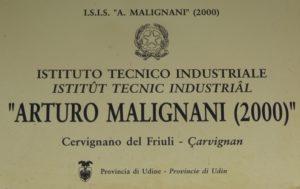 activity promotes with scientific research.
activity promotes with scientific research.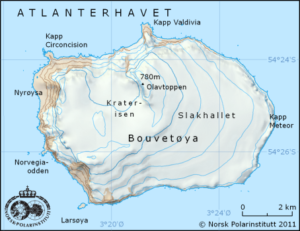 Cape Circoncision (Norwegian: Kapp Circoncision) (54° 23′ 48″ South, 3° 17′ 30″ East) is a peninsula on the north-western edge of subantarctic Bouvet Island.
Cape Circoncision (Norwegian: Kapp Circoncision) (54° 23′ 48″ South, 3° 17′ 30″ East) is a peninsula on the north-western edge of subantarctic Bouvet Island.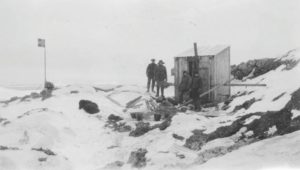
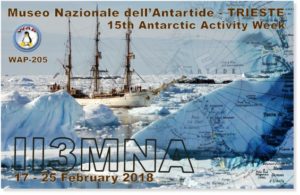 Special callsign II3MNA WAP-205 is on the air during the15th Antarctic Week 2018 operating from MNA – “Museo Nazionale dell’Antartide” in Trieste, Italy. QSL via IQ3TS
Special callsign II3MNA WAP-205 is on the air during the15th Antarctic Week 2018 operating from MNA – “Museo Nazionale dell’Antartide” in Trieste, Italy. QSL via IQ3TS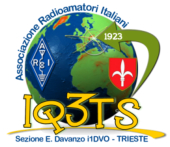 Trieste exposition is organized in a surface of 600 sq. meters, where valuable collections, attractive sceneries and multimedia products, underline current scientific subjects, like climate change, anthropic impact on the environment, biodiversity and space research. This Museum is divided in three sectors: the first one is devoted to Antarctic historical cartography, including valuable ancient maps; the second sector is dedicated to the conquest and exploration of the Antarctic continent, highlighting the three pioneers, protagonists of the most difficult adventures of the world: Scott, Shackleton and Amundsen; the third and last sector is focused exclusively on the Italian expeditions from the 900’s until nowadays organized and realized by “Progetto Nazionale delle Ricerche in Antartide” (PNRA).
Trieste exposition is organized in a surface of 600 sq. meters, where valuable collections, attractive sceneries and multimedia products, underline current scientific subjects, like climate change, anthropic impact on the environment, biodiversity and space research. This Museum is divided in three sectors: the first one is devoted to Antarctic historical cartography, including valuable ancient maps; the second sector is dedicated to the conquest and exploration of the Antarctic continent, highlighting the three pioneers, protagonists of the most difficult adventures of the world: Scott, Shackleton and Amundsen; the third and last sector is focused exclusively on the Italian expeditions from the 900’s until nowadays organized and realized by “Progetto Nazionale delle Ricerche in Antartide” (PNRA).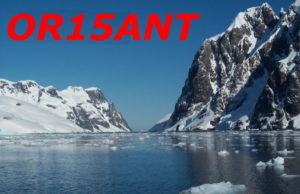 Jean Pierre Hubert ON7ZM, was in Antarctica in Feb 2009 with F5PFP; a great expedition still on the memory of many DXers and Antarctic hunters. Together they did activate several remote sites and Research Bases, some of them very rare!
Jean Pierre Hubert ON7ZM, was in Antarctica in Feb 2009 with F5PFP; a great expedition still on the memory of many DXers and Antarctic hunters. Together they did activate several remote sites and Research Bases, some of them very rare!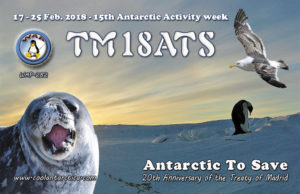 Two more days then the 15th AAW will officially start.
Two more days then the 15th AAW will officially start. Russian President Vladimir Putin was awarded a prize by the Russian Geographical Society in the category “Popularization of natural, historical and cultural heritage of Russia”.
Russian President Vladimir Putin was awarded a prize by the Russian Geographical Society in the category “Popularization of natural, historical and cultural heritage of Russia”.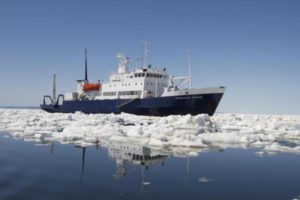 From a message sent (right now) by High Seas Satellite Phone, John Landrigan (K4RXP) said that KA4RXP/MM WILL NOT be operational from February 9 to March 8, 2018 due to failure of two relays in auto tune unit.
From a message sent (right now) by High Seas Satellite Phone, John Landrigan (K4RXP) said that KA4RXP/MM WILL NOT be operational from February 9 to March 8, 2018 due to failure of two relays in auto tune unit.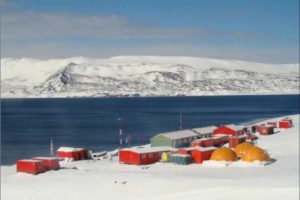 Gabriel de Castilla is actually a Spanish Research Station located on Deception island in the South Shetlands Group, but it was first a military shelter (called Gabriel de Castilla Refuge), when it was constructed during the 1989/90 campaign. (see thetwo pics here below on the right)
Gabriel de Castilla is actually a Spanish Research Station located on Deception island in the South Shetlands Group, but it was first a military shelter (called Gabriel de Castilla Refuge), when it was constructed during the 1989/90 campaign. (see thetwo pics here below on the right)
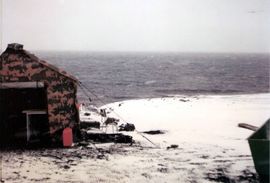 expeditions; six Spanish Army officials took part in the first campaign (1987-88).
expeditions; six Spanish Army officials took part in the first campaign (1987-88).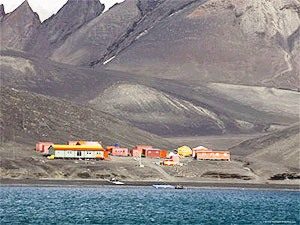 Polar projects are usually funded by the National Plan for Research, Development and Innovation after a peer-review process of proposals.
Polar projects are usually funded by the National Plan for Research, Development and Innovation after a peer-review process of proposals.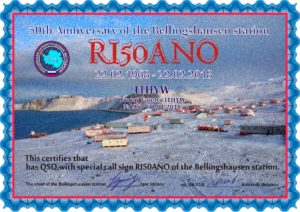 Don’t forget to contact Alexandr A. Ushakov, UA1OJL, who is actually operating from Bellingshausen Station as RI5ØANO to celebrate the 50th Anniversary of its foundation.
Don’t forget to contact Alexandr A. Ushakov, UA1OJL, who is actually operating from Bellingshausen Station as RI5ØANO to celebrate the 50th Anniversary of its foundation.